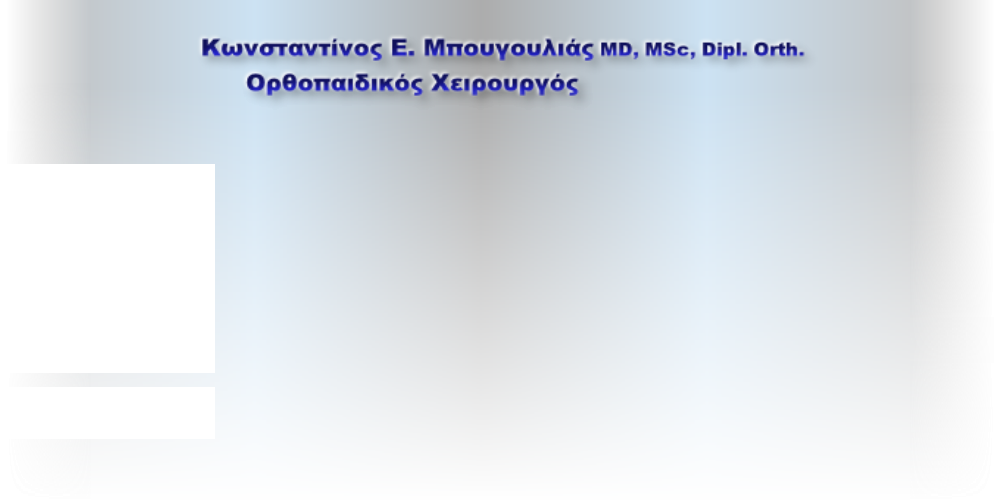


Κωνσταντίνος
Ορθοπαιδικός
Bougoulias.com | © 2022 | All rights reserved
Μπουγουλιάς
Χειρουργός





The latest HTML5, CSS3 and advanced JavaScript have
been used to ensure the highest compatibility.




Case report bent cannulatead screw
Introduction
We report a case of post traumatic bending of a hip cannulated screw for slipped femoral epiphysis. Patient suffered a slipped upper femoral epiphysis.She had a treatment by reduction and fixation with one cannulated screw. Patient presented to the casualty 4 weeks post op following minor trauma of her hip. X rays showed bending of the screw. The bent screw was not removed. She had conservative treatment with satisfactory result.
Case report
13 year old girl presented to the accident and emergency department complaining of severe pain of her left hip. She did not give any history of trauma [Needs confirmation from the notes]. The pain started two days before and gradually became worse.She had another similar incident in the last 6 months which lasted for a few days.On examination, she was unable to weight bear on that leg.The hip was painful in attempted active and passive movements. X rays showed a grade III [severe –65 degrees] left slipped upper femoral epiphysis which was considered acute on chronic.The right hip was normal.
Patient is an Afro-
The treatment was decided to be closed reduction and stabilisation with one cannulated screw [technical informations, stainless steel etc].
She was strictly non weight bearing on the left side for 6 weeks but on the 27 day post op she accidentally stepped heavily on her left leg while she was going down the stairs. She developed acute pain at her left hip and the new X rays showed that the screw had been bent [30 degrees] at the junction of the lateral and middle third. The epiphysis did not lose the position and there were not any obvious fractures. The decision was made not to replace the screw. Patient continued with non weight bearing for another …weeks.The result was satisfactory. Patient is full weight bearing and almost pain free 3.5 months post op with no signs of avascular necrosis, chondrolysis, further slipping or breakage of the screw.
Discussion
Bending of a cannulated screw for slipped upper femoral epiphysis has never been reported before as a post op complication, while breakage of the implant is very well reported.
Images have been checked under magnification [200 %] and there is no doubt that the continuity of the structure was not disturbed, so breakage of the implant was excluded.
Patient is not obese [something that could affect the loading forces through the screw] and she gave a history of just a minor trauma. She stepped heavily on to her left leg trying to prevent falling down the stairs. We think that what happened is that the strain over the implant passed the yield point and caused not elastic but plastic deformation without being enough to cause a complete failure.
Another important issue is that the physis has not been disturbed. That was a main criterion that made us not to replace the screw and continue conservatively, with satisfactory result.
Our aim is to make people aware that there is another post op complication for slipped upper femoral epiphysis fixed with one cannulated screw. This is bending of the screw and if the physis is not disturbed then, probably is not necessary to replace the screw even in an acute on chronic severe slip wich is considered unstable.
